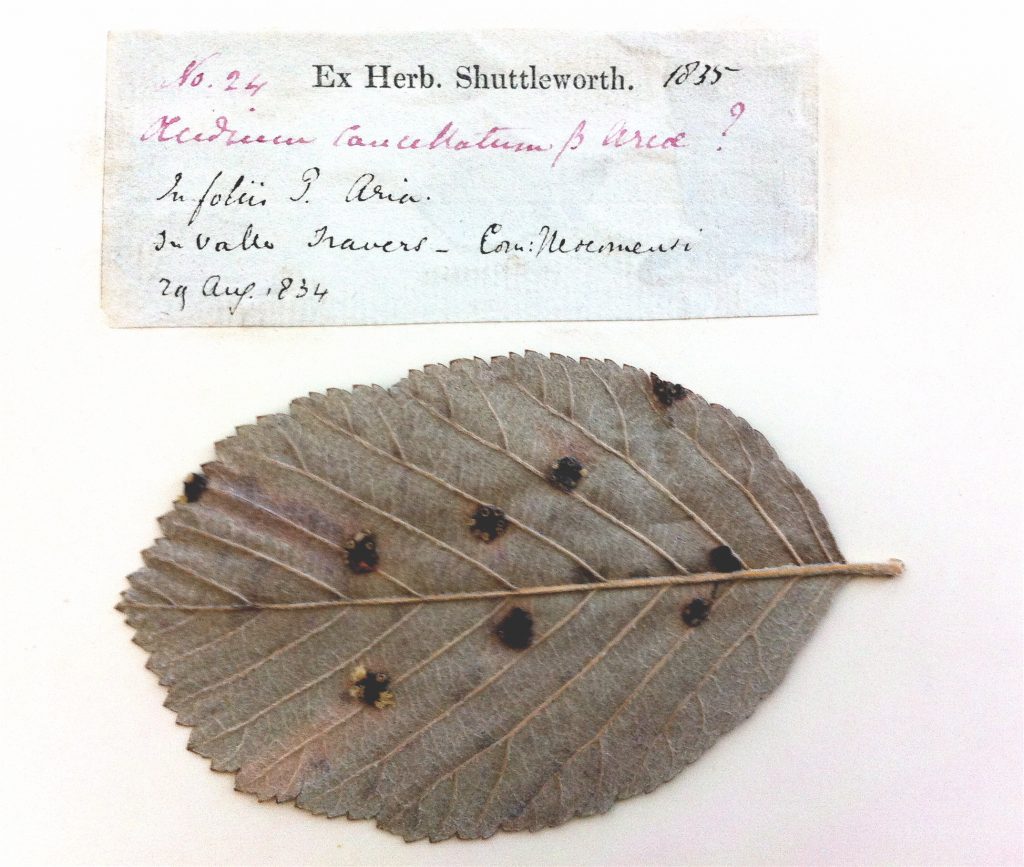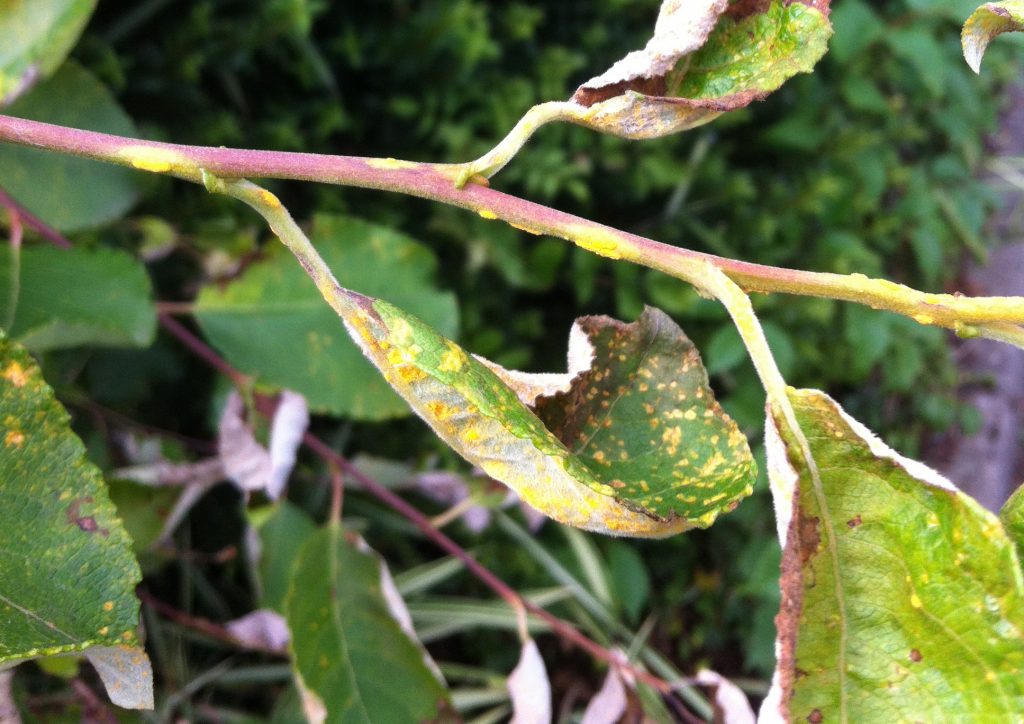Small orange/brown pustules on the leaves of plants could be a sign of infection by a rust fungus. James Iremonger, Heriot Watt University Student, will be searching Edinburgh for evidence of these plant parasites this summer. James, who is a third year microbiology student, is undertaking the project with funding from the British Society for Plant Pathology in collaboration with Dr Stephan Helfer, Senior Mycologist at the Garden.
James hopes to gather enough data to provide a useful picture of the distribution of rusts, as well as some of the variation in susceptibility between trees and woody hosts, which can be revisited and developed in future research.
The project has emerged from a general interest in parasatism explains James…
As a long time Edinburgh resident I’ve been enjoying the Botanics since childhood and have spent many hours in the grounds and exploring the exotic glasshouses. I even played the guitar at an event in the palm house last year! However, in spite of all this comes a slightly guilty admission – I know absolutely nothing about gardening! It was actually an interest in parasitism that initially drew me to the project. I had also heard of the pathogen Puccinia graminis during an introductory plant science lecture, and found it quite fascinating. Commonly known as wheat stem rust, a strain called Ug99 has recently received much press attention for decimating crop yields and threatening global food security.
In order to complete the seven week project James is on a steep learning curve in order to become proficient in rust identification…
The big challenge so far hasn’t been in the molecular details, however. We’ve decided on a list of 11 target genera (all trees and woody plants), which I must now become intimately familiar with. Willow and poplar are badly affected by rust, as well members of the rose family, such as Sorbus and Prunus species. Furthermore, given the time of year, one leaf from any of these trees might house a vast array of diseases, be they insect, bacterial or fungal!
Our approach must be statistically representative we’ve had helpful advice from both a statistician and a lichen specialist on the finer details of infection scoring and random sampling. We have generated a list of 600 random points around the city in which to sample. The wonder of GPS technology means that affected trees in our study can be revisited and monitored in the future; in addition to this it makes the coordinates very easy to find, which is great as I’m useless with a map and compass! Other than these small challenges it’s been great fun so far – I’ve definitely got the bug for plant pathology.
James will be updating his blog at wannabebio.wordpress.com




1 Comment
1 Pingback